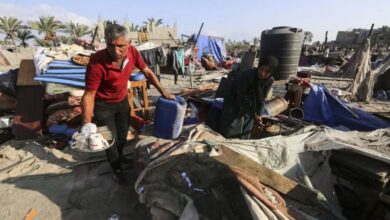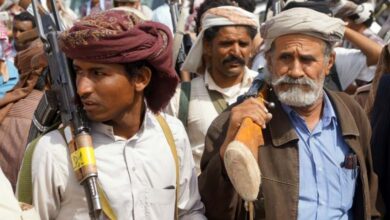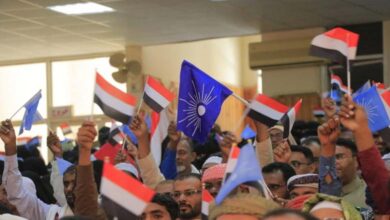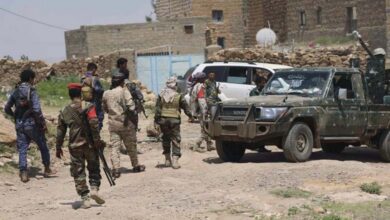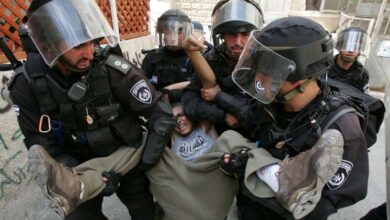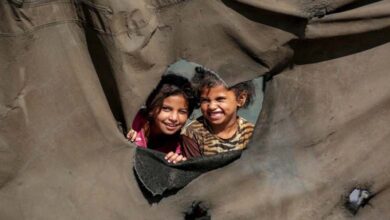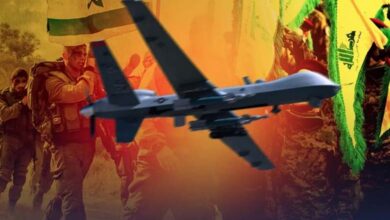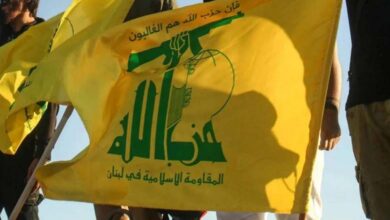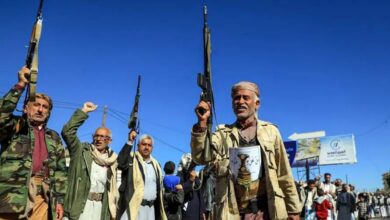Gaza… The Besieged Treasure
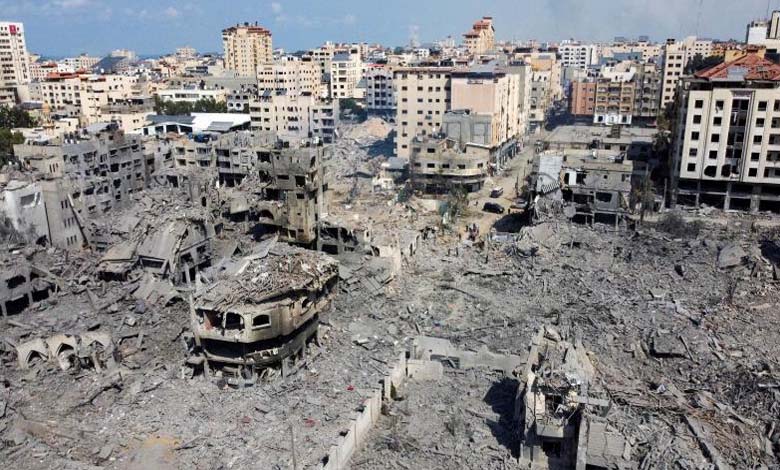
Gaza is a besieged enclave, often described as the “largest open-air prison in the world,” but it is also a geographic and economic treasure, nestled along the shores of the Mediterranean.
A treasure that makes Gaza more than just a conflict zone. U.S. President Donald Trump dreams of transforming it into the “Riviera of the Middle East.”
Regardless of whether Trump’s proposal, which shocked many Palestinians, is a reality or a fantasy.
-
Gazans Call for Aid to Combat Homelessness
-
After 8 Months of Closure… Here’s the Date for the Reopening of the Rafah Crossing between Egypt and Gaza
What do we know about Gaza?
Gaza is the largest and most important city in southern Palestine, having held this distinction for thousands of years.
It is one of two Palestinian regions. The other region is the West Bank, which also includes East Jerusalem and is occupied by Israel.
Gaza is the birthplace of the famous Imam al-Shafi’i and the location of the tomb of Hashim bin Abd Manaf, the grandfather of the Prophet Muhammad (peace be upon him). This is why it is also called Gaza Hashim.
Israel controls its airspace, coastline, and the goods that can cross its borders.
-
The Joy of Return and the Pain of Separation: Mixed Emotions for Northern Gaza Residents
-
Return that Defies “Nakba”: Residents of Northern Gaza between the Silence of the Rubble and the Clamor of Memory
Location
The Gaza Strip is a narrow coastal strip along the Mediterranean Sea.
It is bordered by Egypt to the southwest, Israel to the north and east, and the Mediterranean Sea to the west.
It stretches approximately 41 kilometers in length and its width ranges from 6 to 12 kilometers.
Its total area is 360 square kilometers.
Gaza was a central stop on the ancient trade route between Egypt and the Levant, and today, it remains a geopolitically important point, especially due to its proximity to the Suez Canal, one of the world’s most important waterways.
-
Gaza Ceasefire in Its Fourth Day: Doubts, Uncertainty, and Terrifying Gaps
-
Gaza Reconstruction Will Require Billions of Dollars
Wealth Beneath the Sea
Beyond its golden sands, beneath Gaza’s waters lies one of its most valuable treasures: vast reserves of natural gas.
The natural gas fields discovered 30 kilometers off Gaza’s coast in 1999 represent untapped wealth that Palestinians do not benefit from. There is limited data about them, despite their discovery over 24 years ago.
According to the specialized “Energy Platform,” more than 1.1 trillion cubic feet of gas have been found in Palestinian territorial waters.
-
Back to the Ruins in Gaza: When Rubble Becomes a Homeland and Memories a Shelter
-
Ceasefire in Gaza: Here’s the “Zero Hour”
The “Gaza Marine” field is the largest, containing over a trillion cubic feet of natural gas, with a production capacity of 1.5 billion cubic meters per year for 20 years, according to the platform.
The second field is “Border Field,” which is smaller in capacity and spans the international border between Gaza’s and Israel’s territorial waters.
There is also the “Marie B” field, located on Gaza’s northern maritime border, discovered in 2000 with a capacity of 1.5 trillion cubic feet.
-
Gaza Agreement: What Did the Mediators Say?
-
Ceasefire in Gaza: A UAE Roadmap towards “Sustainable Peace”
In 2004, Israel began to take over and exploit the field, depleting it completely by 2011, according to Palestinian news sites.
In addition to “Gaza Marine” and “Marie B,” there is the “Noa” field, with estimated gas reserves of about 3 trillion cubic feet. Tel Aviv began to take over and exploit its resources in 2012.
Unconfirmed forecasts also suggest the presence of a field in the central region, off the Nuseirat refugee camp, just a few hundred meters from the shore.
-
The Day After the War: What the Palestinian Authority Wants in Gaza
-
Gaza Agreement Reaches the “Final Draft” Stage
Economy
This coastal region has almost no industries and suffers from a chronic shortage of water, electricity, and fuel.
According to official Palestinian figures, the unemployment rate there is 52%, with 70% of the unemployed being young people.
More than two-thirds of the population depends on humanitarian aid.
-
Some Progress in Gaza Negotiations without Reaching an Agreement
-
Gaza Ceasefire: “Slow” Steps Amidst Gaps and Obstacles
However, the Gaza Strip is famous for its fertile soil, once called “the food basket of Palestine.”
Before the last Israeli war, agriculture was a key sector of Gaza’s economy, with Gaza known for cultivating olives, citrus fruits, strawberries, and flowers, which were sometimes exported to global markets.
The fishing industry, which is a primary source of income for fishermen despite restrictions on boat movement, is also an important part of the economy.
-
Gaza War: Israel Reveals Its Soldier Death Toll and the Rise in Soldier Suicides
-
“Death Trap” in Gaza: International Report Condemns Israel’s Actions
Climate
Gaza enjoys a moderate climate, with mild winters and hot, dry summers, prone to drought.
Its coastline is distinguished by its beautiful natural sandy beaches.
Population
The Gaza Strip is one of the most densely populated areas in the world, home to more than 2 million Palestinians, of whom 1.7 million are refugees, according to the United Nations Relief and Works Agency for Palestinian Refugees (UNRWA).
The charity Save the Children states that children make up nearly half of Gaza’s population.
Language
The official language is Arabic. Many Palestinians speak Hebrew, due to work in Israel or geographical proximity.
English is also widely understood by a significant portion of the population.
Currency
The currency used in Gaza is the Israeli shekel.
In addition, Gaza residents also use the US dollar and Jordanian dinar.
-
Collapse of Hospitals in Northern Gaza: Death Closer Than Treatment
-
The Countdown to Trump’s Inauguration: Gaza Truce Hopes Fade amid Rising Tensions
History of Gaza: Between the Past and Present
Gaza was part of historic Palestine before the establishment of the State of Israel in 1948.
In the 16th century, it became part of the Ottoman Empire.
After World War I, it came under British rule until 1948.
At that time, more than 750,000 Palestinians fled or were expelled from their homes with the creation of Israel, an event Palestinians call the “Nakba” (catastrophe).
Following the 1948-1949 Arab-Israeli war, Egypt administered Gaza before Israel took control during the Six-Day War in 1967.
With the Oslo Accords signed between the Palestinian Authority and Israel between 1993 and 1999, 67% of Gaza came under Palestinian sovereignty, while the rest was occupied by Israeli settlements until the withdrawal in 2005.
-
Water Crisis in Gaza: Human Rights Watch Accuses Israel of Genocide
-
Details of the “Gaza Truce”: Disputes over “Prisoners” and Flexibility on the “Israeli Withdrawal”
Five Wars
Since 2008, Gaza has witnessed four Israeli wars, starting with “Cast Lead” in that year, which resulted in the deaths of 1,440 Palestinians.
Then, “Pillar of Defense” in November 2012, lasting eight days, resulting in 174 Palestinian deaths and six Israeli deaths before a ceasefire brokered by Egypt.
Next, “Operation Protective Edge” in July 2014, which killed 2,251 Palestinians, most of them civilians, and 74 Israelis, almost all soldiers.
Followed by “Guardian of the Walls” in 2021, which resulted in 250 Palestinian deaths and 12 Israeli deaths.
Finally, “Iron Swords,” launched by Israel following the surprise attack by Hamas on October 7, 2023, which lasted 471 days and caused over 60,000 Palestinian deaths, inflicting massive destruction on the strip.
-
International Report: Israel’s War in Gaza is the most “Deadly and Destructive” Ever
-
Decisive Hours: Intense Arab Efforts to End the Gaza War Quickly
-
“The Truce Crescent” Attempts to Tear the Clouds of Gaza War… Positive Expectations for a Near Breakthrough
-
Gaza and the Ceasefire: “Positive” Signals Racing against Trump’s “Hell”


